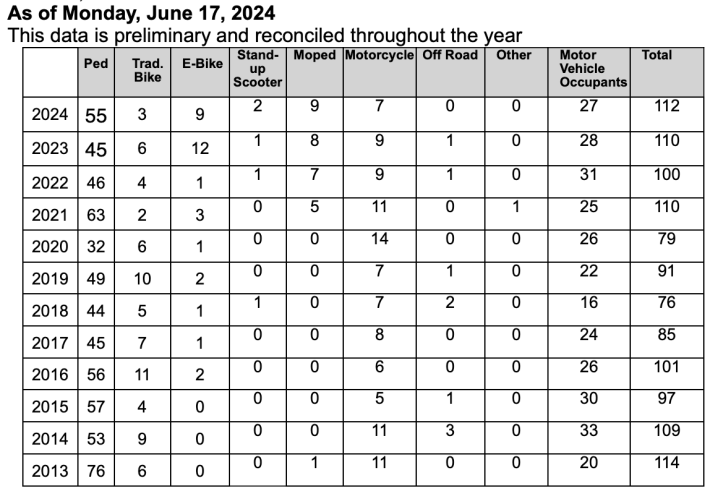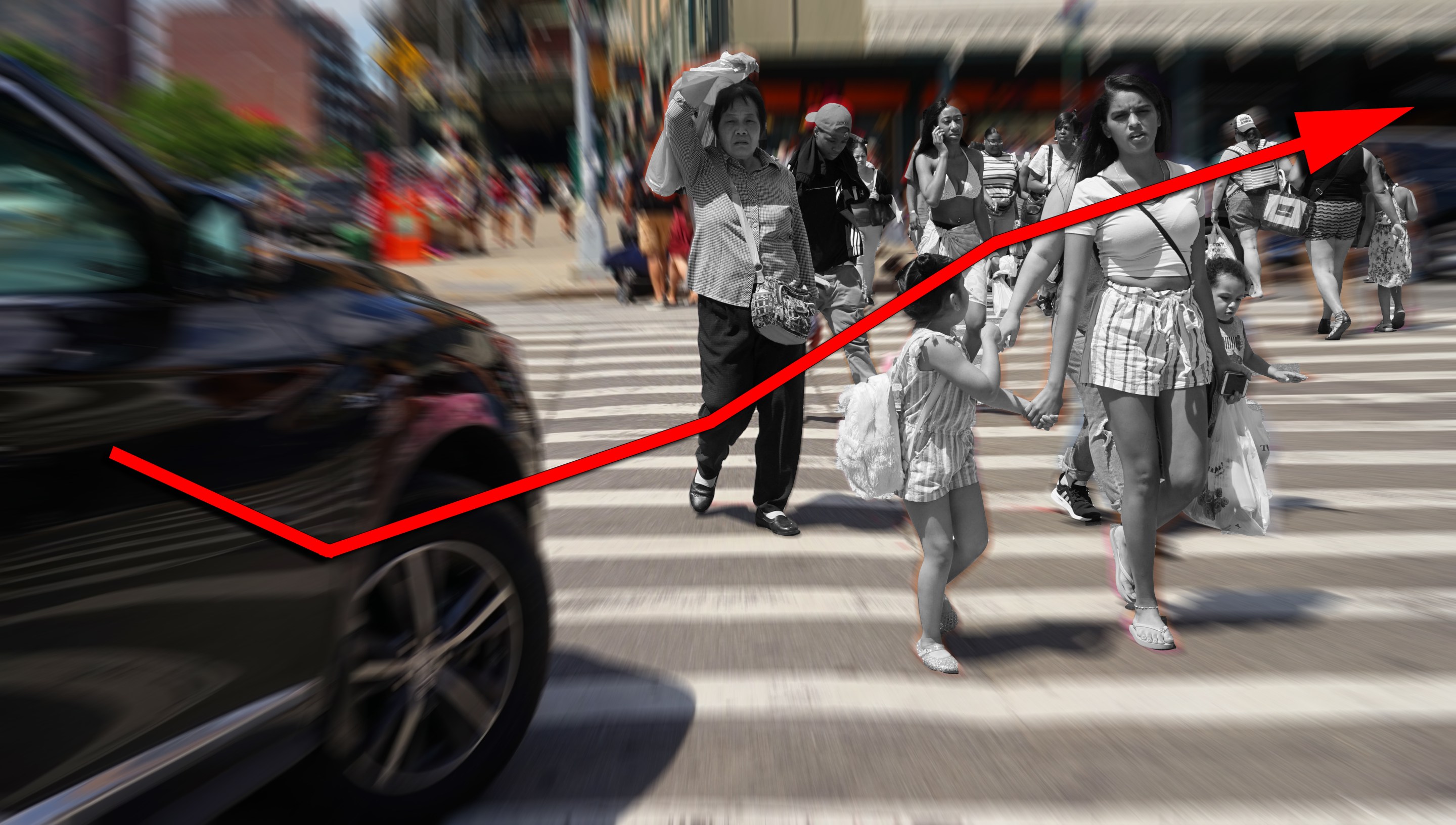A 44-year-old woman standing on a busy Jackson Heights sidewalk gets mowed down by a reckless motorcyclist. A 78-year-old woman is killed by a driver on the Upper East Side. An 86-year-old man is run down by a city truck driver. A 50-year-old man fatally is struck by the driver of a Nissan SUV.
All in just three days last week.
The city is in the midst of a pedestrian death and injury spike, with 55 pedestrians killed between Jan. 1 and June 17, the second highest number through this point of the year since 2016, per the Department of Transportation's numbers:

And fatalities only tell one part of the story. According to the NYPD, pedestrian injuries are up 3.6 percent so far this year, with 4,036 pedestrians injured through June 16, or an average of 24 pedestrians injured every single day in this city. That's up from 3,895 injured during the same period last year.
So far this year, Brooklyn is be the epicenter of the crisis, with 1,411 pedestrians, or 35 percent of the total, injured so far this year. Queens is next with 1,105 pedestrian injuries, or 27 percent.
Some anti-bike groups will likely blame cyclists, e-bike and moped riders for the pedestrian injury crisis, but the statistics do not bear that out.
Between Jan. 1 and June 14, 2024, police identified the vehicle that injured 3,479 people — with 273 pedestrians, or 7.8 percent, injured by the rider of a bike, moped or scooter or e-bike.
Over the same period in 2023, police identified the vehicles involved in crashes that injured 3,359 pedestrians — and 261 people, or 7.7 percent, were injured by the rider of a bike, moped or scooter or e-bike.
In other words, in both years, more than 92 percent of all injured pedestrians were wounded by the drivers of cars, trucks and other heavy vehicles.
And of the 49 pedestrian fatalities in the NYPD crash database (the database lags behind the DOT's 55 fatalities), three people were killed as a result of a crash with the rider of a bike, moped or e-scooter. The remainder, more than 94 percent, will killed by the drivers of cars, trucks and other heavy vehicles.
All of that said, pedestrians are getting safer over the very long term; in 1990, for example, 366 pedestrians were killed in New York City by drivers, and recent years have been roughly one-third of that. But that doesn't mean it's all good news.
"The DOT's table show that pedestrian fatalities got a lot worse during Covid and has stayed that way," said former DOT official Jon Orcutt. "There's no one theory as to why it has gotten worse, but it's just more of the same: Inadequate or no city response to traffic deaths, declining enforcement of traffic and parking rules, drivers increasingly understanding and taking advantage of this and beating cameras with masked plates because no enforcement, more cars, more congestion and therefore more aggressive drivers, street design changes that are too slow and too wimpy to keep up with both these problems, and longer-term issues like increasing vehicle size."
The Department of Transportation did not respond to a question about what is going on.
It's also worth asking Gov. Hochul's office what her plan is for the zone that had been designated as Manhattan's central business district for the purposes of congestion pricing. So far this year, 375 pedestrians have been injured in Manhattan below 60th Street, according to the NYPD — up 12.3 percent from the same period last year.
Congestion pricing was slated to reduce the number of cars entering that area by 100,000 per day, which was expected to have a commensurate effect on reducing crashes.
"For someone allegedly concerned about affordability and the cost of living, the governor is strikingly blase about the immense financial expense, not to mention emotional and physical devastation, that car crash deaths and serious injuries inflict on New York families," said Danny Pearlstein of Riders Alliance.
After initial publication of this story, the governor's spokesman Anthony Hogrebe provided a statement that did not address the specific question:
"The safety of all New Yorkers is Gov. Hochul's top priority. From expanding Red-Light Camera programs across the state to finally getting Sammy's Law done in this year's budget, Governor Hochul has a proven track record of protecting pedestrians and making our streets safer."
Transportation Alternatives wants all levels of government to do more.
“We’re horrified that traffic violence has already killed 55 pedestrians in New York City this year," the group's spokesperson Alexa Sledge said. "Every traffic fatality is a call to action, and we hope the city moves quickly to implement the safety infrastructure we know will save lives. New Yorkers need and deserve solutions like raised crosswalks, protected bike lanes, and turn calming — all infrastructure upgrades that protect pedestrians.”






